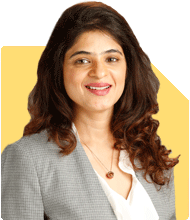Ramalingam Kalirajan |8459 Answers |Ask -Follow
Mutual Funds, Financial Planning Expert - Answered on Apr 05, 2024
He has an MBA in finance from the University of Madras and is a certified financial planner.
He is the director and chief financial planner at Holistic Investment, a Chennai-based firm that offers financial planning and wealth management advice.... more

Hi, i m a breadwinner to my family of 4 (Myself 44yrs, wife 42, one daughter 7yrs n son 4 yrs). I am salaried engineering professional in private firm with 13L/annum. To have financial gain, i invested in shares, gained a little but now in loss of Rs 3L with total investment of 8L. Its been 2yrs but it seems it will be waste of time further as it is unpredictable when those shares will recover? n if not any profit when can i get the principal amount? Somebody suggested me to withdraw all from shares n with those Rs 5L, invest in MF not only to recover 3L but also gain profit in Long term. My investment goals are obviously as below; 01) Lumpsum amount for child education after 10 n 15 yrs from now. 02) For their marriage. After 20yrs from now. 03) Have sufficient funds as lumpsum or monthly post retirement. 15yrs from now. As an asset, I have got only flat amounting 80L now in Noida. A principal home loan outstanding 14L on that property, 24K as EMI. I m staying in rented accommodation in Panvel - Mumbai where i am doing Job. My monthly saving of now is almost NIL after all expenses, but can somehow manage to invest around 5~6k. Plz suggest, with given conditions what should be my next step to achieve above 3 goals?
Immediate Action on Shares: Consider selling the shares to minimize further losses and reinvest the remaining amount in more stable investment avenues like mutual funds.
Mutual Fund Investment: With the proceeds from the shares (5L), consider investing in mutual funds. Given your long-term goals, opt for diversified equity funds or balanced funds that offer growth potential with comparatively lower risk.
Emergency Fund: Since your monthly savings are limited, focus on building an emergency fund equivalent to at least 6-12 months of your expenses. Keep this fund in a liquid or low-risk investment option like a savings account or short-term debt fund.
Child Education and Marriage: For your children's education and marriage goals, consider starting SIPs (Systematic Investment Plans) in equity mutual funds. Allocate funds based on the respective time horizons and risk appetite.
Retirement Planning: Since you have a flat as an asset, ensure that you continue to pay off the home loan EMIs regularly. Additionally, allocate a portion of your monthly savings towards retirement planning through SIPs in retirement-focused mutual funds or NPS (National Pension Scheme).
Regular Review: Regularly review your investment portfolio's performance and make necessary adjustments based on changing market conditions, financial goals, and risk tolerance.
Seek Professional Advice: Consider consulting a financial advisor who can provide personalized guidance tailored to your specific financial situation and goals.
By following these steps and staying disciplined in your investment approach, you can work towards achieving your financial goals and securing your family's future.
You may like to see similar questions and answers below
Ramalingam Kalirajan |8459 Answers |Ask -Follow
Mutual Funds, Financial Planning Expert - Answered on Apr 02, 2024
Ramalingam Kalirajan |8459 Answers |Ask -Follow
Mutual Funds, Financial Planning Expert - Answered on May 06, 2024
Ramalingam Kalirajan |8459 Answers |Ask -Follow
Mutual Funds, Financial Planning Expert - Answered on May 23, 2024
Ramalingam Kalirajan |8459 Answers |Ask -Follow
Mutual Funds, Financial Planning Expert - Answered on Oct 14, 2024
Prof Suvasish Mukhopadhyay |651 Answers |Ask -Follow
Career Counsellor - Answered on May 16, 2025
Prof Suvasish Mukhopadhyay |651 Answers |Ask -Follow
Career Counsellor - Answered on May 16, 2025
Radheshyam Zanwar |1634 Answers |Ask -Follow
MHT-CET, IIT-JEE, NEET-UG Expert - Answered on May 16, 2025
Radheshyam Zanwar |1634 Answers |Ask -Follow
MHT-CET, IIT-JEE, NEET-UG Expert - Answered on May 16, 2025
Ashwini Dasgupta |107 Answers |Ask -Follow
Personality Development Expert, Career Coach - Answered on May 16, 2025
Ramalingam Kalirajan |8459 Answers |Ask -Follow
Mutual Funds, Financial Planning Expert - Answered on May 16, 2025
Ramalingam Kalirajan |8459 Answers |Ask -Follow
Mutual Funds, Financial Planning Expert - Answered on May 16, 2025
Milind Vadjikar |1236 Answers |Ask -Follow
Insurance, Stocks, MF, PF Expert - Answered on May 16, 2025
Milind Vadjikar |1236 Answers |Ask -Follow
Insurance, Stocks, MF, PF Expert - Answered on May 16, 2025
Ravi Mittal |589 Answers |Ask -Follow
Dating, Relationships Expert - Answered on May 16, 2025

























